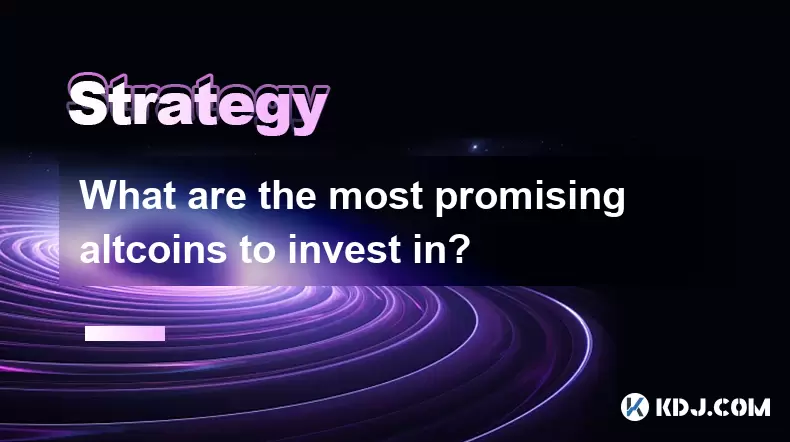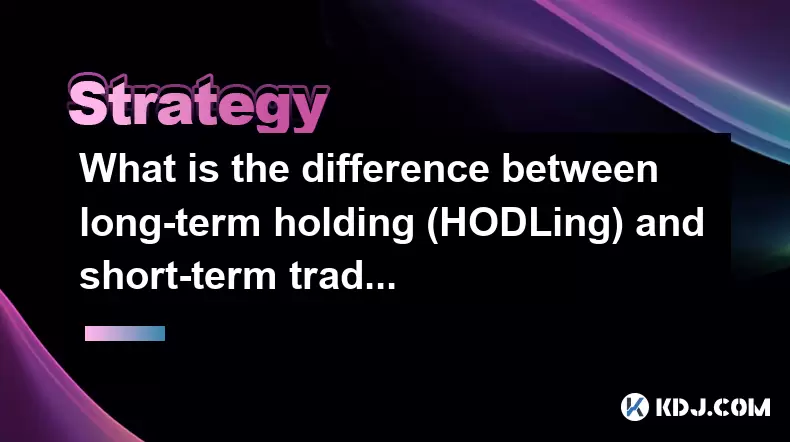-
 Bitcoin
Bitcoin $117700
-1.00% -
 Ethereum
Ethereum $4458
-3.91% -
 XRP
XRP $3.119
0.14% -
 Tether USDt
Tether USDt $1.001
-0.02% -
 BNB
BNB $836.6
-1.56% -
 Solana
Solana $189.5
-3.90% -
 USDC
USDC $0.9998
-0.02% -
 Dogecoin
Dogecoin $0.2335
1.29% -
 Cardano
Cardano $0.9642
1.51% -
 TRON
TRON $0.3539
-1.19% -
 Hyperliquid
Hyperliquid $47.41
-1.84% -
 Chainlink
Chainlink $21.92
-3.28% -
 Stellar
Stellar $0.4286
-0.23% -
 Sui
Sui $3.724
-3.29% -
 Bitcoin Cash
Bitcoin Cash $594.8
-0.78% -
 Ethena USDe
Ethena USDe $1.001
0.04% -
 Hedera
Hedera $0.2501
-2.06% -
 Avalanche
Avalanche $23.96
-4.87% -
 Litecoin
Litecoin $119.0
-2.32% -
 Toncoin
Toncoin $3.473
0.82% -
 UNUS SED LEO
UNUS SED LEO $9.596
0.17% -
 Shiba Inu
Shiba Inu $0.00001301
-0.39% -
 Uniswap
Uniswap $11.03
-0.25% -
 Polkadot
Polkadot $3.935
-2.62% -
 Dai
Dai $1.000
0.01% -
 Bitget Token
Bitget Token $4.564
-1.76% -
 Cronos
Cronos $0.1512
-4.11% -
 Ethena
Ethena $0.7306
-1.09% -
 Pepe
Pepe $0.00001087
-2.68% -
 Aave
Aave $300.2
-4.00%
What is stablecoin investment
Stablecoins provide value stability and liquidity in the volatile cryptocurrency market, but investors should diversify their portfolios and consider counterparty risk and regulatory uncertainty.
Jan 12, 2025 at 11:10 am

Key Points:
- Understanding Stablecoins and Their Types
- Benefits and Risks of Stablecoin Investments
- How to Invest in Stablecoins
- Stablecoin Liquidity and Value Stability
- Diversification Strategies for Stablecoin Portfolios
Understanding Stablecoins and Their Types
Stablecoins are cryptocurrencies designed to maintain a stable value, typically pegged to a fiat currency like the US dollar. This stability is achieved through various mechanisms, including collateralization, algorithmic adjustment, and fiat-backed models.
- Collateralized Stablecoins: These stablecoins are backed by a reserve of assets, often fiat currencies or other cryptocurrencies. This collateral provides the value stability and ensures that the stablecoin can be redeemed at the pegged value. Examples include Tether (USDT) and USD Coin (USDC).
- Algorithmic Stablecoins: These stablecoins use mathematical algorithms and smart contracts to maintain value stability. They adjust the supply and demand of the stablecoin by adjusting its price or minting and burning new tokens. Examples include TerraUSD (UST) and Dai (DAI).
- Fiat-Backed Stablecoins: These stablecoins are directly backed by fiat currencies held in bank accounts or custodial services. They offer a more straightforward and transparent approach to value stability. Examples include TrueUSD (TUSD) and Circle (USDC).
Benefits and Risks of Stablecoin Investments
Investing in stablecoins offers several benefits:
- Value Stability: Stablecoins maintain a consistent value, making them less volatile than other cryptocurrencies. This stability reduces investment risk and provides a safe haven during market fluctuations.
- Liquidity: Stablecoins are highly liquid, meaning they can be easily converted to fiat currencies or other cryptocurrencies. This liquidity allows for quick and convenient trading.
- Yield-Earning Opportunities: Some stablecoins offer yield-earning opportunities through staking, lending, or participating in DeFi protocols. This provides investors with additional income streams.
However, there are also risks associated with stablecoin investments:
- Counterparty Risk: Collateralized stablecoins rely on the reliability of the custodian or issuer, raising concerns about potential fraud, hacks, or insolvency.
- Regulatory Uncertainty: The regulatory landscape for stablecoins is still evolving, and changes in regulations could impact the stability and value of these assets.
- Volatility in Liquidity: During periods of market stress or instability, the liquidity of stablecoins can be impacted, making it difficult to buy or sell them quickly.
How to Invest in Stablecoins
To invest in stablecoins, follow these steps:
- Choose a Stablecoin Platform: Select a reputable cryptocurrency exchange or custodial service that offers stablecoins.
- Create an Account: Register an account with the platform and provide identity verification as required.
- Fund Your Account: Deposit the desired amount of fiat currency or cryptocurrency into your account.
- Purchase Stablecoins: Use your account balance to buy stablecoins of your choice.
Stablecoin Liquidity and Value Stability
The liquidity and value stability of stablecoins are two critical factors to consider when investing.
- Liquidity: Most stablecoins are highly liquid, with active trading volumes on exchanges. However, liquidity can be impacted by market conditions and platform availability.
- Value Stability: Stablecoins aim to maintain their pegged value, but they can experience fluctuations during periods of market volatility or exchange disruptions.
Diversification Strategies for Stablecoin Portfolios
To reduce risk and enhance returns, consider diversifying your stablecoin portfolio:
- Multiple Stablecoins: Invest in a range of different stablecoins, including collateralized, algorithmic, and fiat-backed options, to mitigate the risks associated with individual stablecoins.
- Cryptocurrency and Fiat Currencies: Allocate a portion of your portfolio to cryptocurrencies like Bitcoin or Ethereum, and fiat currencies like US dollars or Euros. This diversification reduces the overall volatility of your portfolio.
- Interest-Earning Strategies: Stake or lend stablecoins to earn interest while preserving their value and liquidity.
FAQ About Stablecoin Investment
- What are the potential returns on stablecoin investments?
The returns on stablecoin investments typically depend on the interest rates offered by staking or lending platforms. These rates can vary depending on market conditions and the specific stablecoin. - Are stablecoins subject to capital gains tax?
In most jurisdictions, stablecoins are treated like any other cryptocurrency and are subject to capital gains tax when sold for a profit. - How do I choose the right stablecoin exchange?
Consider the exchange's reputation, liquidity, and fees when selecting a stablecoin exchange. Look for platforms that offer a wide range of stablecoins and competitive trading conditions. - What is the difference between stablecoin yield farming and staking?
Stablecoin yield farming involves lending or staking stablecoins on decentralized finance (DeFi) protocols to earn interest or rewards. Staking, on the other hand, refers specifically to holding tokens of a blockchain network to earn rewards for validating transactions.
Disclaimer:info@kdj.com
The information provided is not trading advice. kdj.com does not assume any responsibility for any investments made based on the information provided in this article. Cryptocurrencies are highly volatile and it is highly recommended that you invest with caution after thorough research!
If you believe that the content used on this website infringes your copyright, please contact us immediately (info@kdj.com) and we will delete it promptly.
- Kazakhstan's Crypto Leap: Bitcoin ETF and Central Asia's Digital Finance Future
- 2025-08-13 12:45:19
- BlockDAG Presale Blazes Past $371M: Fundraising Frenzy Fuels Crypto Sensation
- 2025-08-13 13:05:21
- Meme Coins: Chasing the 2025 Surge – Which Will Moonshot?
- 2025-08-13 10:25:23
- Bitcoin's Wild Ride: Rally, Pullback, and What's Next
- 2025-08-13 10:25:23
- Bitcoin, Bitmax, and Institutional Demand: A New Era of Crypto Investment
- 2025-08-13 10:45:12
- Solana, ROAM, and Airdrops: What's the Buzz in 2025?
- 2025-08-13 11:35:13
Related knowledge

How to use stop-loss orders to limit potential losses?
Aug 08,2025 at 02:01pm
Understanding Stop-Loss Orders in Cryptocurrency TradingA stop-loss order is a risk management tool used by traders to automatically sell a cryptocurr...

What are the most promising altcoins to invest in?
Aug 10,2025 at 11:42am
Understanding the Role of Private Keys in Cryptocurrency WalletsIn the world of cryptocurrency, private keys are the cornerstone of ownership and cont...

Should I invest in Bitcoin or altcoins?
Aug 13,2025 at 11:35am
Understanding Bitcoin and AltcoinsWhen deciding whether to invest in Bitcoin or altcoins, it's essential to first understand what each represents. Bit...

What are the most important metrics to look at when evaluating a cryptocurrency?
Aug 13,2025 at 11:36am
Market Capitalization: Understanding the Total ValueWhen evaluating a cryptocurrency, market capitalization is one of the most foundational metrics. T...

How to read cryptocurrency charts and use technical analysis?
Aug 08,2025 at 11:08am
Understanding the Basics of Cryptocurrency ChartsCryptocurrency charts are graphical representations of price movements over time. These charts are es...

What is the difference between long-term holding (HODLing) and short-term trading?
Aug 10,2025 at 05:30pm
Understanding HODLing in the Cryptocurrency SpaceThe term HODL originated from a typo in a 2013 Bitcoin forum post and has since become a widely accep...

How to use stop-loss orders to limit potential losses?
Aug 08,2025 at 02:01pm
Understanding Stop-Loss Orders in Cryptocurrency TradingA stop-loss order is a risk management tool used by traders to automatically sell a cryptocurr...

What are the most promising altcoins to invest in?
Aug 10,2025 at 11:42am
Understanding the Role of Private Keys in Cryptocurrency WalletsIn the world of cryptocurrency, private keys are the cornerstone of ownership and cont...

Should I invest in Bitcoin or altcoins?
Aug 13,2025 at 11:35am
Understanding Bitcoin and AltcoinsWhen deciding whether to invest in Bitcoin or altcoins, it's essential to first understand what each represents. Bit...

What are the most important metrics to look at when evaluating a cryptocurrency?
Aug 13,2025 at 11:36am
Market Capitalization: Understanding the Total ValueWhen evaluating a cryptocurrency, market capitalization is one of the most foundational metrics. T...

How to read cryptocurrency charts and use technical analysis?
Aug 08,2025 at 11:08am
Understanding the Basics of Cryptocurrency ChartsCryptocurrency charts are graphical representations of price movements over time. These charts are es...

What is the difference between long-term holding (HODLing) and short-term trading?
Aug 10,2025 at 05:30pm
Understanding HODLing in the Cryptocurrency SpaceThe term HODL originated from a typo in a 2013 Bitcoin forum post and has since become a widely accep...
See all articles

























































































